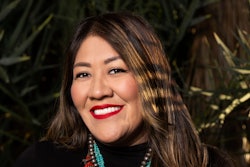Massachusetts has long earned the reputation as the education state. More than 500,000 students are enrolled in undergraduate, graduate and certificate programs across the state. But new research indicates that many of Massachusetts' own residents are finding it hard to sustain the cost of a college degree due to the lack of financial aid in the state.
According to uAspire, a nonprofit that works with over 5,000 high school students annually in the Greater Boston area, most of whom are first-generation students, students from low-income families or students of color, said that most of them had trouble finishing four years of college without going into deep debt.
According to a study done by the Institute for College Access & Success, over 70 percent of students graduate with an average of $30,639 in student loan debt.
A college education is often seen as a gateway to a good-paying job and a better life for many students from low-income families. Research has found that the median lifetime earnings for a college graduate are twice the amount as those with a high school diploma or GED. However, with rising college tuition, it has become more difficult for many students to finance themselves through college. Back in 1988, the state-funded aid MASSGrant could cover 80 percent of the tuition and mandatory cost on average. But now? Even the maximum amount would only cover about 14 percent.
“The grounding reasoning for our doing this report is that our advisors were seeing that there are not affordable options for students,” said Anika Van Eaton, the author of the report and uAspire’s Massachusetts policy director. “So we took a deeper dive through looking at the financial aid offers in the research to see what this really means. And, you know, try and try and lift this up.”
The report surveyed 2,253 financial aid offers from four-year colleges and universities in Massachusetts received by 1,111 high school seniors between 2018 to 2020. Van Eaton and her team found that even at public colleges and universities, over half of the financial aid offers still left students with a bill of about $10,000 to cover by themselves or through loans. The statistics at private institutions are even more stark, at about 80 percent.
“We wanted to make it clear that there's not a plethora of affordable options both within our public institutions and private institutions,” said Van Eaton.




















